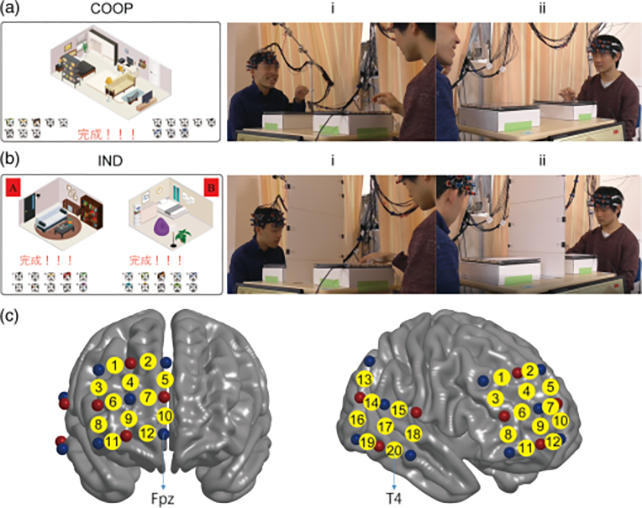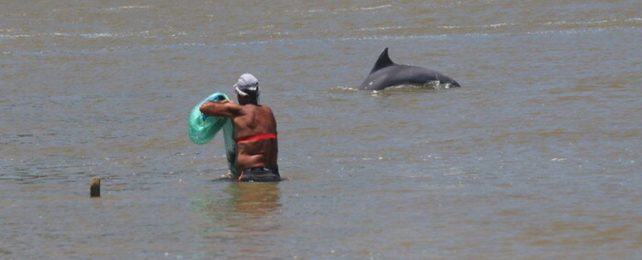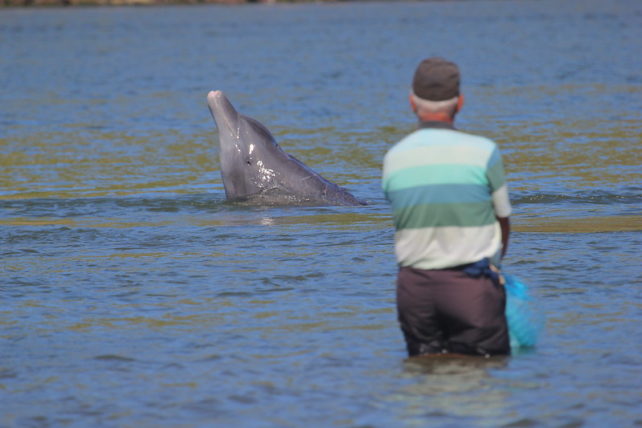
2,200-Year-Old Flush Toilet Found in China Likely One of The Oldest Ever Discovered
SOCIETY20 February 2023
 Archeologists excavating the ruins of a palace in the city of Yueyang were surprised to find this flush toilet. (China.org.cn/Facebook)
Archeologists excavating the ruins of a palace in the city of Yueyang were surprised to find this flush toilet. (China.org.cn/Facebook)Archeologists in China uncovered a flush toilet that is likely one of the oldest ever discovered, China’s state news agency reported earlier this week.
While excavating two large buildings in the ruins of the palace in the city of Yueyang, the researchers from the Institute of Archaeology at the China Academy of Social Sciences were surprised to make the discovery.
The toilet is estimated to be between 2,200 and 2,400 years old, from between the Warring States Period to the beginning of the Han Dynasty. The find is intriguing as the invention of the modern flush toilets is thought to be from Victorian England.
Fan Mingyang, a design expert in ancient tools, said the toilet is “deceptively advanced” because of the water drainage system that is used in the modern day, according to China’s Global Times newspaper.
A toilet bowl, other broken parts, and a pipe that led to an outdoor pit were discovered last summer. The “luxury object” would likely have only been used by high-ranking members of the palace found in China’s Shaanxi province, Liu Rui, a member of the excavation team, told China Daily.
He added it was that servants would have had to pour water into the toilet bowl every time it was used.
“It is the first and only flush toilet to be ever unearthed in China. Everybody at the site was surprised, and then we all burst into laughter,” Liu told the paper.
Analyzing the surrounding soil may also hint at the diets and eating habits of the ancient people.
The larger archeological dig at the palace adds “great value to the study of the layout of the capitals” of the ancient dynasties, the Institute said in a press release.
This article was originally published by Business Insider.
https://www.sciencealert.com/2200-year-old-flush-toilet-found-in-china-likely-one-of-the-oldest-ever-discovered?fbclid=IwAR2jh2pDJ7dtHcwgCa1bIxeHneMeSAsv8-Ig_5tYAJB3dx6xavShl8w1dQU
Working on a Task With Another Person Changes Your Brain Activity, Study Finds
Something strange and rather wonderful happens when two people are working together on the same task, a new study shows: key regions of their brains sync up, suggesting we can match each other’s neural activity when we’re in groups.

Something strange and rather wonderful happens when two people are working together on the same task, a new study shows: key regions of their brains sync up, suggesting we can match each other’s neural activity when we’re in groups.
In the study, 39 pairs of volunteers were asked to design the interior of a virtual room together via a touchscreen, until it was satisfactory to both of them. As well as having their brain activity monitored through a functional near-infrared spectroscopy technique, the participants were watched for signs of eye contact.
To study the participants’ responses, the researchers developed special processing and modeling techniques capable of recognizing social interactions (the eye contact) and mapping them to particular moments and regions of brain activity.

“Neuron populations within one brain were activated simultaneously with similar neuron populations in the other brain when the participants cooperated to complete the task, as if the two brains functioned together as a single system for creative problem-solving,” says psychologist Yasuyo Minagawa, from Keio University in Japan.
The study participants were directed to complete the designated task on their own as well as in pairs, giving the researchers the opportunity to examine both solo brain activity (within-brain synchronizations or WBSs) and group brain activity (between-brain synchronizations or BBSs).
Working together jointly led to “robust” BBS in the superior and middle temporal regions of the brain, as well as specific parts of the prefrontal cortex in the brain’s right hemisphere. However, WBS wasn’t as strong in the test scenarios.
What’s more, the BBSs were shown to be strongest when one of the individuals raised their gaze to look at the other, suggesting an important role here for social interactions. On the other hand, when the volunteers were working on their own, the WBS was much stronger within the same brain regions.
“These phenomena are consistent with the notion of a ‘we-mode’, in which interacting agents share their minds in a collective fashion and facilitate interaction by accelerating access to the other’s cognition,” says Minagawa.
The investigation’s method is an improvement over previous experiments in ‘second-person neuroscience’, which simply put two people to work on the same motor task, but scientists will need to find ways of measuring more complex social interactions besides eye contact in the future.
The authors behind this new study think that’s possible though – and there is already evidence that some kind of brain synchronization happens when two people are in dialog with each other.
We know that human beings are wired to be social creatures, but there’s still a lot we don’t understand about how our brains shift when we’re in company. As scanning and computing technology improves, we can shed light on those unknowns.
“We could apply our method to more detailed social behaviors in future analyses, such as facial expressions and verbal communication,” says Minagawa.
“Our analytical approach can provide insights and avenues for future research in interactive social neuroscience.”
The research has been published in Neurophotonics.
https://www.sciencealert.com/working-on-a-task-with-another-person-changes-your-brain-activity-study-finds/amp?fbclid=IwAR0D7UvJKLj6j59gd4cGXnKQHvA0EtKywBCWCkfV6KAuUp70FbKbkCT5pm8
An Incredible Thing Happens When Dolphins And Humans Team Up
HUMANS03 February 2023
 (vdorse/Getty Images)
(vdorse/Getty Images)Humans and dolphins on the southern coast of Brazil have created a carefully synchronized ‘dance’ to shepherd as much migrating mullet into their nets and mouths as possible.
Traditional fishers in the city of Laguna have been working with Lahille’s bottlenose dolphins (Tursiops truncatus gephyreus) to capture fish for more than 140 years.
From above, the dolphins appear to drive schools of mullet into the shore, right near fishers who are wading in the shallows. Only after receiving a cue from the dolphins do the fishers throw their nets.

Researchers have spent more than a decade studying this close relationship, and they say it is a rare example of mutualism, in which two species help each other to both improve their chances of survival.
“We knew that the fishers were observing the dolphins’ behavior to determine when to cast their nets, but we didn’t know if the dolphins were actively coordinating their behavior with the fishers,” says marine biologist Mauricio Cantor of Oregon State University.
“Using drones and underwater imaging, we could observe the behaviors of fishers and dolphins with unprecedented detail and found that they catch more fish by working in synchrony.”
The fight to survive in nature is often portrayed as just that: a battle for limited resources, mates, or territories. But cooperation is also an important part of the equation that tends to get overlooked.
Teamwork and synchronized activity within a species is common – think of fish swimming in a school or lions hunting in packs – but two different animal species working together is far more rare.
Humans have always interacted with wildlife for our own gain. Our ancestors took wild wolves and turned them into domesticated dogs for hunting and protection. They also welcomed cats into the fold. But more often than not in cases of interspecies interactions, only one animal is benefiting, like sharks that feed on the scraps left behind by fishers.
It’s more unusual to find a mutually beneficial relationship, but even when two species are after the same prey, lunch doesn’t have to be a zero sum game.
Cooperative fishing between humans and cetaceans – aquatic mammals such as dolphins and whales – is a great example of just that.
In the past, human whalers have teamed up with orcas to hunt baleen whales in southeastern Australia. Meanwhile, in Eastern Australia, eyewitness accounts and stories from Aboriginal Australians suggest that dolphins and humans once fished alongside one another more frequently than they do today.
The traditional fishers of Laguna in Brazil are some of the only examples left of such a close and cooperative bond.
Both the dolphins and the local fishers have learned to read each other’s body language and respond accordingly.
Fishers, wearing GPS wristbands while wading in the shallows so their motion could be tracked, moved towards dolphins the moment the marine mammals arrived on the scene. They also cast their nets at higher rates when dolphins were around.
Clearly, the mammals were a clue that mullet were near. Fishers who followed their fins were 17 times more likely to capture fish in the shallows. They also caught 4 times as much, even if they spent the same amount of time casting their nets.
“Dolphins clearly generate foraging benefits to fishers and stimulate beneficial actions in response to increased mullet availability that is not present when dolphins are absent,” the authors write.

But what do the dolphins get out of it? It’s a lot harder to count how much fish a mammal swallows compared to how much a fisher catches. And how does a dolphin’s catch in the presence of humans differ to its catch without humans?
Researchers have used a few clues above and below the water to find out. From above, the authors noticed dolphins approaching quite close to fishers and giving them a cue to cast their nets – a deep dive.
Beneath the water, meanwhile, dolphins increase their echolocation clicks when fishers cast their nets. When the nets are down, dolphins also dive for longer.
Researchers suspect the dolphins are benefiting from the way the nets disrupt the school of mullet and sends individuals off on their own, making them easier to snag. Underwater footage also shows individual dolphins grabbing fish straight from the nets, and local fishers report feeling this happen often.
Almost all the local fishers interviewed by researchers said they believed the marine mammals were gaining extra fish in the situation.
In the end, the authors calculate that bottlenose dolphins who engage in cooperative fishing are 13 percent more likely to survive.
But if anything were to happen to the dolphins, the mullet, or the humans in this area, those benefits could disappear. There’s nothing genetically different about these mammals. This behavior is all about context, and there’s no saying how long that context will last.
“Safeguarding cultural behaviors that benefit both humans and wildlife not only encourages their coexistence but is also emblematic of how the conservation of ‘culturally significant units’ advances the conservation of biodiversity,” the authors write.
Mutualism between humans and wildlife is getting more and more rare, Cantor says. It’s important we preserve it where we can.
The study was published in PNAS.
https://www.sciencealert.com/an-incredible-thing-happens-when-dolphins-and-humans-team-up
